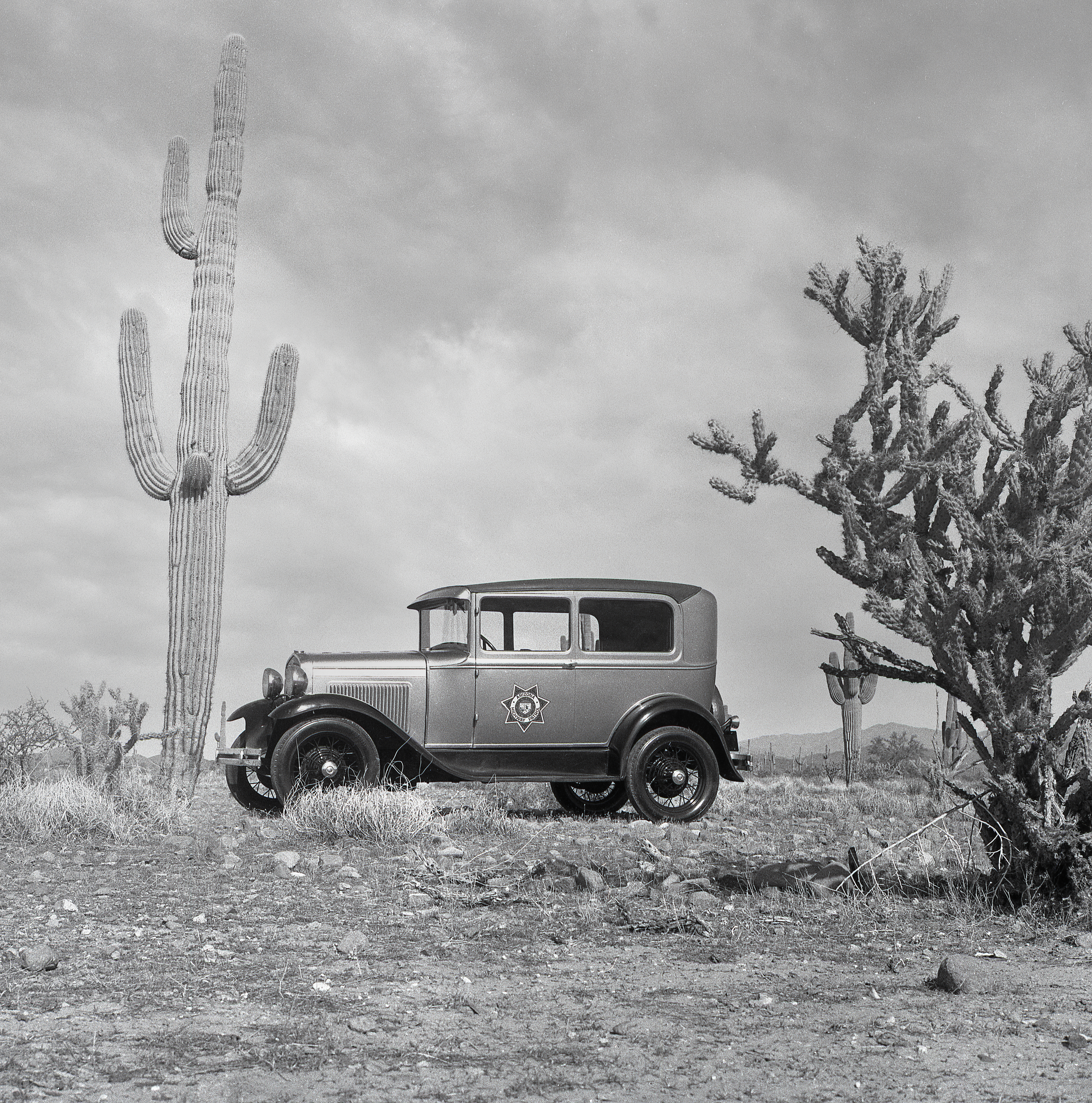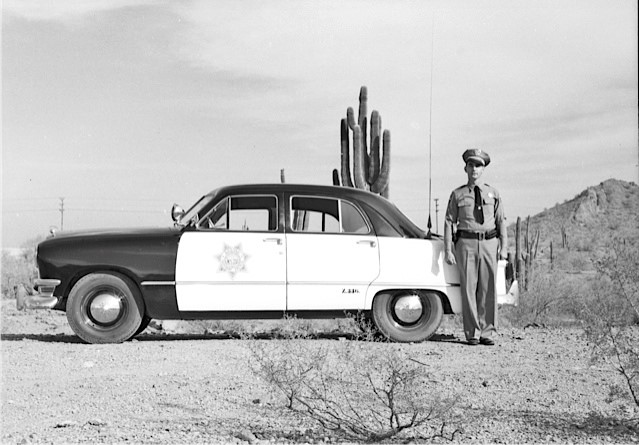
Main navigation
DPS History

Arizona's first regional law enforcement effort occurred in 1901 when the territorial governor organized the "Arizona Rangers." This small force strongly impacted the rustling and smuggling problems of the time but was disbanded in 1909, three years before Arizona achieved statehood.
Twenty-two years later, because of concern regarding the growing number of accidents and unlicensed vehicles on its highways, the Arizona Highway Patrol was instituted as a branch of the Arizona Highway Department. The initial force in 1931 was limited to a superintendent, 14 patrolmen (one authorized for each county), and one desk sergeant.
In 1967, the governor's crime commission recommended the creation of the department to "assemble state-level law enforcement activities into a single, effective governmental unit." Two years later, on July 1, 1969, the Arizona Department of Public Safety was officially established. It consolidated the functions and responsibilities of the Arizona Highway Patrol, the Enforcement Division of the Department of Liquor Licenses and Control, and the Narcotics Division of the Arizona Department of Law. Since 1969, the department has been charged with additional responsibilities and has developed into a modern, comprehensive law enforcement agency.

Today, the Arizona Department of Public Safety is a law enforcement agency primarily focusing on patrolling and enforcing laws on Arizona state highways. Additional responsibilities include enforcing laws in traffic, narcotics, organized crime/racketeering, liquor, and specific regulatory functions. Operational and technical assistance is provided to local and state governmental agencies and other components of the criminal justice community; services include scientific analysis, aircraft support, emergency first care, criminal information systems, and statewide communications.
The department also promotes and enhances public safety quality through cooperative enforcement, intelligence gathering, training law enforcement agencies' employees, and increasing public awareness of criminal activities. With its main headquarters in Phoenix, DPS employs over 2,500 employees who work together to serve and support public safety interests throughout Arizona.